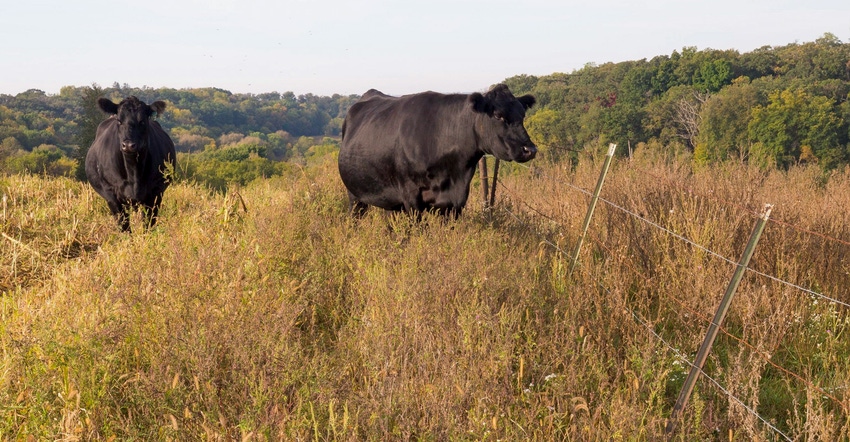May 19, 2020

For years, we have heard about biosecurity concerns involving contagious livestock diseases, especially for pork and poultry. Now, the highly contagious COVID-19 pandemic has hit close to home for humans around the world. Social, or physical, distancing to combat COVID-19 is being encouraged to reduce the infection risk. Physical distancing is the hallmark of biosecurity. We can apply distancing concepts to protect livestock on farms, which is what lines-of-separation protocols do.
Highlighting physical distancing by mapping lines of separation clearly delineates off-farm and on-farm movements of vehicles, people and animals. Imaginary, but very real, lines of separation mark the “clean,” or biosecure portion of the farm from the “dirty,” or potentially contaminated portions of the farm. Whoever or whatever crosses the lines has the potential to move invisible disease-causing pathogens.
Limit spread of disease
The purpose of a lines-of-separation protocol is to manage all farm traffic patterns by controlling and directing movement to limit the spread of disease. As described by the Secure Beef Supply plan, in the event of a foot-and-mouth disease outbreak, maps with highlighted lines of separation will be required for securing the animal and animal products movement permits to enable business continuity from the farm. FMD supply plans for beef, pork, milk, sheep and wool all recognize the important physical biosecurity created by lines of separation.
As the farm lines of separation are drawn, think of the operation as a castle, where the moat is the perimeter line of separation. The drawbridge is the access point — the entrance or driveway. Interior roads with their associated lines of separation branch from the access point to, for example, areas for bulk feed delivery or dead stock removal.
Label an aerial map to delineate the farm’s perimeter and interior lines of separation. Current aerial maps may be found on Google Earth. There will also be internal boundaries to mark to control movement within processing or hospital areas, or a dairy’s milk house, for example.
Share the operation’s map with its lines of separation to those listed on the farm’s operating plan, and discuss with these people the expectations to maintain the farm’s biosecurity. During those discussions, develop the equipment list the farm will provide so everyone may follow the biosecurity rules. For more information about farm operating plans, visit the University of Wisconsin-Madison Division of Extension Agricultural Resources web page.
Control movement in, around farm
Nonfarm personnel must be careful of their touchpoints and those of their vehicles within the farm’s biosecure space. Remember, on-farm personnel and vehicles also can spread potential pathogens; both must follow biosecurity protocols for entry to and movement within the farm operation.
Movement into, within and away from the operation crosses the lines of separation through clearly marked and controlled access points. Post farm entrance signs that read: “Stop. Authorized personnel only. All visitors by appointment only. For an appointment, call xxxx.” Post directional signs, designate visitor and delivery parking areas, and mark the farm office.
Keep a visitor and delivery log. Record all personnel, including processing crews, animal transporters and truckers, feed suppliers, etc., that enter. Note whether there was animal contact. Only individuals with a valid reason for having animal contact should be allowed to do so. Example logs are available at securebeef.org.
After COVID-19, chances are there will be a new bug taking its place; therefore, maintaining lines of separation is a good biosecurity habit to develop. Just think how much better prepared your operation will be in case FMD or some other disease arrives.
Stuttgen is a veterinarian and the Extension agriculture educator in Taylor County, Wis. This column is provided by the University of Wisconsin-Extension’s Wisconsin Beef Information Center.
You May Also Like




